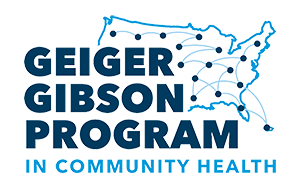The Affordable Care Act (ACA) transformed America's community health centers (CHCs) by dramatically expanding coverage through Medicaid and Marketplace reforms. Powered by the ACA’s Medicaid expansion, community health centers (CHCs) grew in scale, scope and capacity to serve more than 31 million people in 2023 – 10 million more than in 2013, just prior to the implementation of the ACA. Today's health centers, operating in more than 15,600 sites nationwide, are truly the backbone of the healthcare safety net.
Mandatory Medicaid work requirements and changes to eligibility determination and renewals in H.R.1, One Big Beautiful Bill Act, place the entire Medicaid adult expansion population at risk. These changes will not only drastically reduce the number of people with Medicaid coverage, but also threaten the stability and continued viability of CHCs. Effectively, the deep cuts will turn back the clock, erasing important gains made over the past ten years and affecting entire communities. Our new data highlights the consequences and implications.
A related literature scan summarizes the extensive body of literature on the positive impact of Medicaid expansion on health centers and the patients and communities they serve. Read, The Impact of the Affordable Care Act Medicaid Expansions on Community Health Centers (CHCs): A Scan of the Literature
New Commonwealth Fund Impact Report
The Commonwealth Fund and GWU’s Milken Institute School of Public Health have released a new report, How Medicaid and SNAP Cutbacks in the “One Big Beautiful Bill” Would Trigger Big and Bigger Job Losses Across States that estimates the impact of H.R.1-proposed federal funding cuts to Medicaid and Supplemental Nutrition Assistance Program (SNAP) on the economies, employment, and state and local tax revenues for every state and the District of Columbia in 2029, when reductions are fully implemented.
The authors find that in 2029, cuts to Medicaid and SNAP would cause state gross domestic products to fall by $154 billion, a figure 18 percent greater than the $131 billion in savings to the federal government. The cuts would result in the loss of 1.22 million jobs nationwide. States with the greatest job losses include California, New York, Texas, and Pennsylvania while New Mexico, Arizona, Kentucky and Louisiana will sustain the highest relative job losses. State and local tax revenues would fall by $12 billion. More economically fragile states with higher levels of poverty would likely be hurt more. Budget cuts to the health insurance marketplaces and the sequestration of Medicare funding will further harm the economy and employment.
Leighton Ku, professor of Health Policy and Management and Director of GW’s Center for Health Policy Research, is lead author of this study along with other Geiger Gibson Program colleagues. You can find the full report including state-specific estimates here on The Commonwealth Fund’s website.



